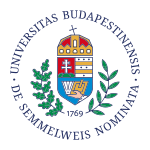Pázmány Péter Catholic University (PPCU) (Hungarian: Pázmány Péter Katolikus Egyetem (PPKE)) is a private university in and near Budapest, Hungary, belonging to the Catholic Church and recognized by the state. Founded in 1635, the PPCU is one of Hungary's oldest and most prestigious institutions of higher education.
The Faculty of Theology was established by archbishop Péter Pázmány, as part of a new university, in Nagyszombat, the Kingdom of Hungary (today Trnava, Slovakia) in 1635 (the original university church is now the Cathedral of Trnava). This university was transferred to the present-day Budapest in 1777 and named after Pázmány in 1921. In 1950, the university was renamed to Eötvös Loránd University, but in the same year, the government split the Faculty of Theology off the university to form the independent Theological Academy as an anti-Church measure. After the fall of Communism, the Theological Academy was expanded with a faculty of humanities to form the Pázmány Péter Catholic University, which was accredited by the state in 1993.The university is located in two cities: the Rectors' Office, the Faculty of Theology, the Faculty of Law, the Faculty of Information Technology, and the Postgraduate Institute of Canon-Law are located in Budapest. The campus of the Vitéz János Faculty of Teaching is in Esztergom, just across the Esztergom Basilica. The Faculty of Humanities operated a campus in Piliscsaba, in the vicinity of Budapest from 1994 until end-2020, after which it relocated its departments and courses to Budapest.
The university has several research groups and institutes. One of the most important international research programmes of the university is the Syro-Hungarian Archeological Mission, which does the restoration of Margat's crusader fortress.
Nearly 8.000 students attend the university, enrolled in several Bachelor, Master, and PhD programmes.
International cooperations include the Erasmus programme and bilateral agreements. It was named in 2009 as one of the most active members of the Erasmus programme. It is a co-establisher of the International Research Universities Network and has strong connections with Radboud University Nijmegen, Catholic University of Leuven, Pontificia Universidad Javeriana in Bogota, Saint Louis University and University of Notre Dame.










